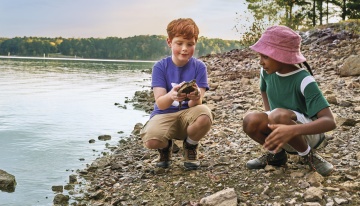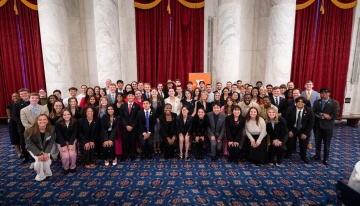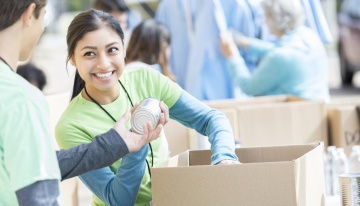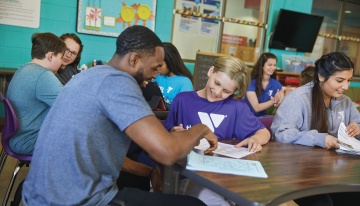How to Create a Safe Space for LGBTQ+ Campers
Let’s look at the numbers. Across the country, there are approximately 950,000 children and teens enrolled in YMCA summer camps. There are ten times that many U.S. adults—9 million—who identify as lesbian, gay, bisexual or transgender.
These statistics may suggest that at least one child enrolled in any given summer camp has a relative or primary caregiver who identifies as LGBTQ+. And perhaps, at least one young person enrolled in your community’s summer camp currently identifies—or in the future may identify—as LGBTQ+.
Sobering research reveals 30% of LGBTQ+ youths have attempted suicide, with LGBTQ+ youth being nearly five times more likely to have attempted suicide in comparison to heterosexual youth.
So how can youth development professionals create a safe and welcoming environment for all children and teens? And how can we better equip staff to be both curious and knowledgeable about all communities, including LGBTQ+ communities?
Here are nine recommendations:
- Recognize that every child is unique in their self-identities, across all dimensions of diversity. No two people are the same. Our perspectives and experiences are influenced by how we identify—and we are ever-changing as we age, grow and develop. This is especially true for children. Take time to get to know each child’s unique self-identities. Include LGBTQ+ youth in the conversation and ask what will help them to feel safe and included.
- Be an ally. Support and celebrate openly LGBTQ+ staff, youth and families.
- Work to confound gender-based assumptions regarding toys, activities and attire. Use gender-neutral language and invite all children to participate in all activities. Avoid assuming that boys prefer to play sports and girls prefer to make arts-and-crafts.
- Ensure all campers and staff have access to the facilities aligned with their gender identity and comfort within facility and resource limitations.
- Provide training opportunities to foster education, awareness and knowledge-building related to LGBTQ+ communities and best practices for inclusion.
- Use gender-neutral (or self-identified) pronouns when referencing guardians/parents, partners, families and significant others. When creating registration forms, camper communications and other messaging, consider that not every camper is raised in the same type of home. Being sensitive to language and aiming to respect the way individuals self-identify is a critical step to becoming an inclusive camp.
- Lift up stories of LGBTQ+ inclusion in trainings, marketing and camp activities. Do your camp marketing or training materials include people from all walks of life, including same-sex couples, families and transgender individuals?
- Celebrate Pride Month! June is the official month, but pride can be celebrated year-round! Communicate early and often that your camp is a safe space for LGBTQ+ youth, families and communities.
- Build partnerships with local organizations that serve the LGBTQ+ community, such as houses of worship, health care centers and educational institutions. These relationships may provide support beyond the scope of Y services and also help your staff become more educated and welcoming over time.
At the Y, we believe that in a diverse world, we are strnger when we are inclusive and our doors are open to all—this includes LGBTQ+-identified individuals and communities.




